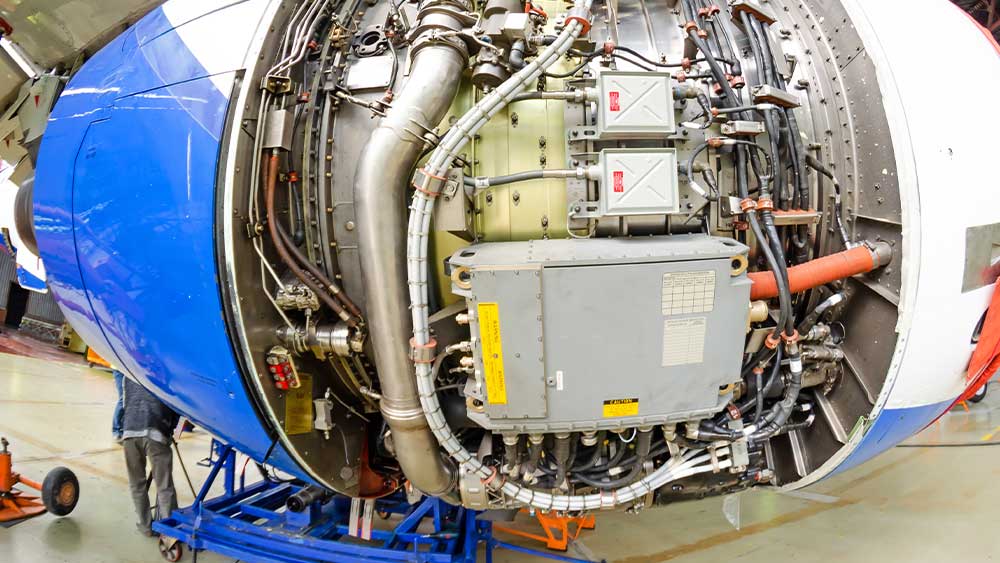
A person troubleshoots the engine of an aircraft. Several types of careers are available within the aerospace industry, ranging from working on electrical components to designing aircraft. |
Image: Getty Images
What is the Aerospace Industry?
The primary application in the aerospace industry is the design and development of flight vehicles, such as aircraft, missiles, spacecraft and satellites.
Majors that Could Lead to Aerospace Careers
Students interested in aerospace careers could start their career paths through several majors offered at the Texas A&M University College of Engineering.
Please see the list below for some of our majors that could lead to an aerospace career.
- Aerospace engineering: Aerospace engineers learn skills and theories to work on leading technology and integrate it into aeronautical and astronautical fields.
- Computer engineering: Computer engineers are skilled in flight control, radar systems, black boxes and flight software systems.
- Computer science: Computing professionals work with the aerospace industry to design glass cockpits with touch-screen interactive displays, develop flightpath models and perform complex calculations. Texas A&M computer science and engineering students regularly intern with and are employed by NASA.
- Electrical engineering: Learn about avionic circuits, flight control chips, radiation-hardened circuits and radar systems.
- Electronic systems engineering technology: Explore embedded systems and sensors for flight control, radio frequency theory and circuit designs used in radar and antenna systems common to aerospace applications.
- Industrial and systems engineering: Industrial engineers work in aerospace industries to improve aircraft and spacecraft production and maintenance systems. They serve an essential role in reducing waste and enhancing safety.
- Industrial distribution: Learn about procurement, warehousing, materials management, supply planning and logistics support to aerospace manufacturing, maintenance and support.
- Manufacturing and mechanical engineering technology: Learn about propulsion systems, automation, materials and manufacturing systems.
- Materials science and engineering: Materials make aerospace vehicles fly faster, more efficiently and more safely. For example, developing effective manufacturing processes for composites is critical to affordably making lighter-weight airplanes that can travel greater distances on less fuel.
- Mechanical engineering: Mechanical engineering majors learn about aerodynamic design for cars, airplanes, drones, etc. They also explore the development of satellite technologies and systems for aviation and space travel, including power generation, instrumentation and controls.
- Multidisciplinary engineering: Aeronautical and aerospace engineers rely on an interdisciplinary mix of mechanical, electronics and materials engineering skills.
- Multidisciplinary engineering technology: Learn about drones and electromechanical aerospace systems, including rovers and space experimental labs.
- Ocean engineering: From the highest heights to the deepest depths, there is a lot of overlap between the sky and the sea. Ocean engineers analyze and design vehicles using hydrodynamics (similar to aerodynamics). They also interface atmospheric science and engineering with ocean science and engineering to forecast ocean wave propagation, surge and turbulence.